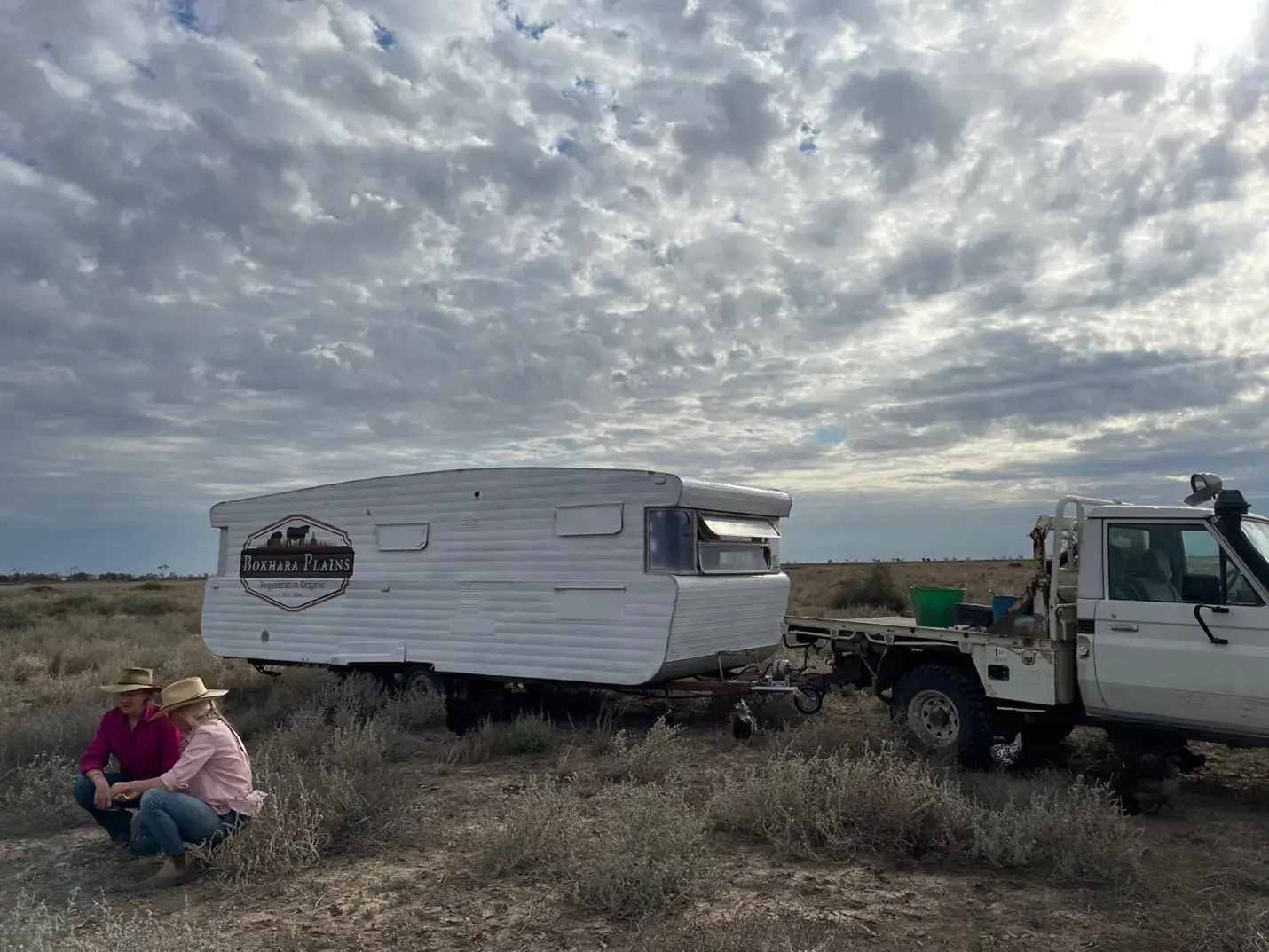Chooks for Change
Chickens are taking off! These little ground-scratching legends support profitable enterprises, regenerate soil, and offer healthy food for local communities. To learn more about the diversity of chook choices and challenges, Soils for Life recently visited three farmers, all in different stages of their chicken enterprise.
Free range in the rangelands
In November, Soils for Life travelled to Bokhara Plains, just outside Brewarrina, NSW, to visit Harriet Finlayson. Harriet is a young farmer, who recently returned to the family farm. As a young girl, Harriet met Joel Salatin on a field day in Mudgee, and ever since she’s wanted to have chickens as part of her family’s soil regeneration practices. A silver lining to the downtime during Covid was the opportunity to build on all her investigation of how to make chickens work in the semi-arid environment of Bokhara Plains, and to take the first steps towards putting it into practice.
Harriet ordered her first batch of fertile eggs in the mail (she was unable travel due to Covid restrictions) and converted a caravan into a beautiful mobile chicken coop. The enterprise is now gaining speed as Harriet develops her own style of training chickens and managing chicken rotations in the field, as well as developing a business for the eggs around Brewarrina.
Harriet’s goal is to meet the poultry and egg needs for her regional community. And support for her enterprise is spreading quickly. As Harriet observed, ‘I find that people in town love seeing the stories of the chickens, and they are quite proud of it, saying, ‘yah, that’s where my chickens come from’. And this has an important ripple effect.’
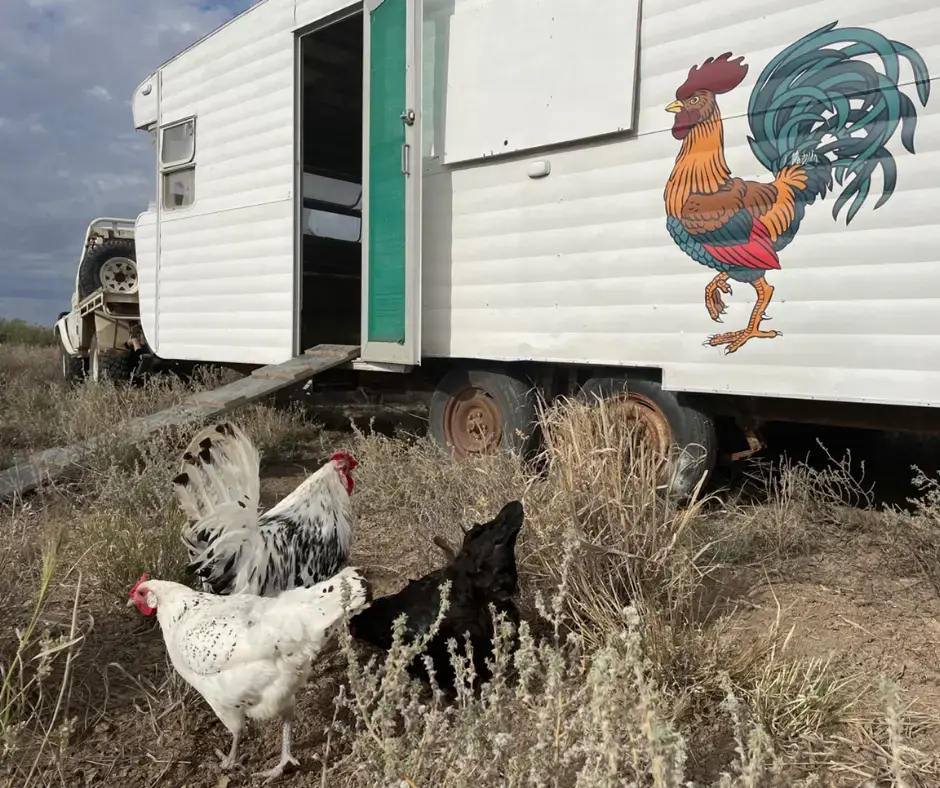
Harriet’s chicken caravan, and chicken breeds selected specifically for the temperatures of her landscape and behaviours helpful for her soils (Soils for Life). At Bokhara Plains, the chickens ‘spend every day doing as many chicken things as they possible can’.
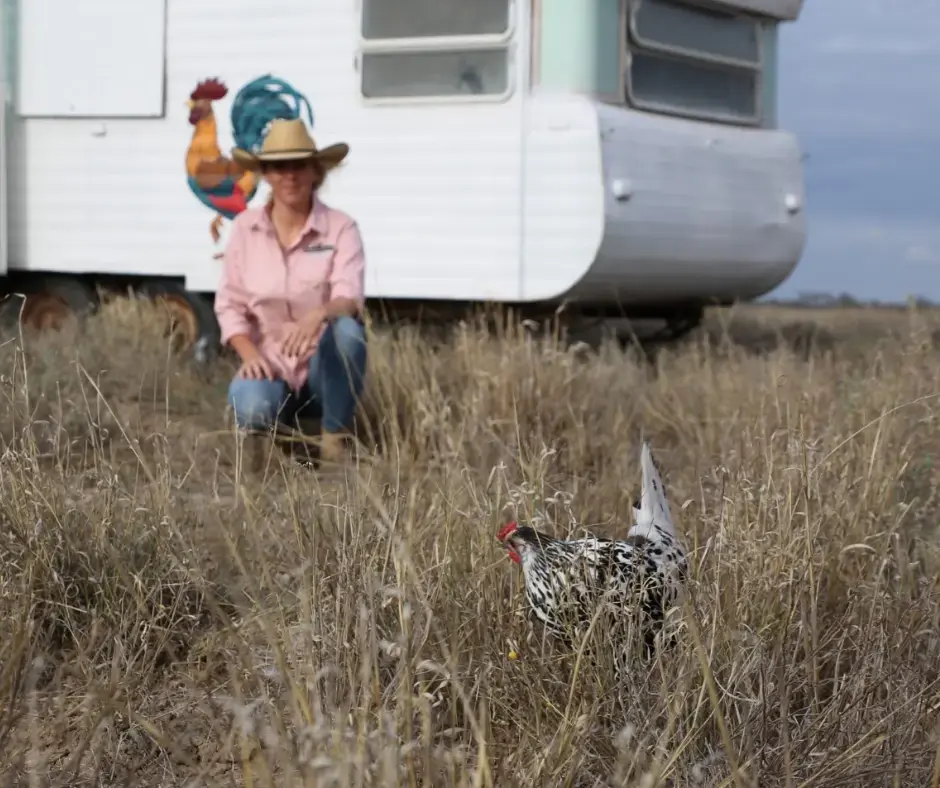
Harriet and her chicken caravan, which she moves weekly to help regenerate the soils (Nviro media)
Building natural capital in the capital
Adam Lilleyman is also a young farmer in the ACT, who Soils for Life visited in December. Five years ago, Adam started building his egg enterprise as part of succession planning with his parents. Growing from 100 chickens to over 2,000 chickens, Adam’s enterprise now employs five local staff. And still, local demand for his eggs is greater than his supply.
Similar to Harriet, Adam moves the chooks weekly through the paddocks. The chickens get to work – digging and distributing cattle dung into to the soil, as well as distributing their own potent little packets of nitrogen across the paddock, all the while happily foraging for insects to supplement their feed.
Recent soil samples undertaken by the Lilleymans, in partnership with ACT NRM, have shown significant and beneficial increase in soil nitrogen as a result of integrating chickens into holistic management processes.
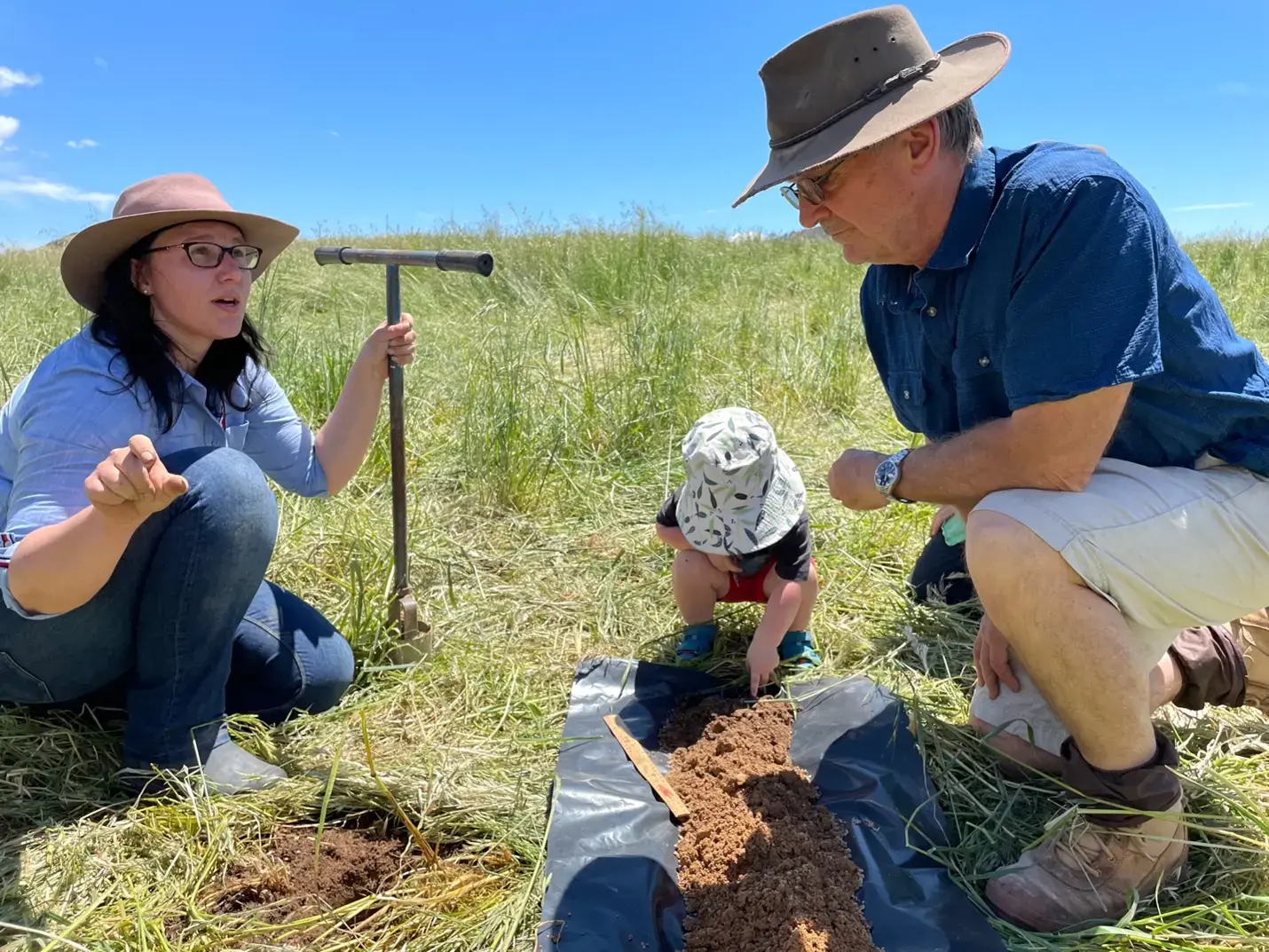
Daniela Carnovale, Soils for Life soils scientist, and John Lilleyman discussing the health of soil on the Amberly farm.
Pastured poultry pioneers
Soils for Life also recently caught up with one of Australia’s pioneering pasture-raised, regenerative chicken farmers – the Pincott family – who have been working with and learning about chickens for many years. The Pincotts are participating in Soils for Life’s latest case study on the 8 families case group.
Regenerative conversations
These three producers are all exploring integration of chickens into their enterprises. To support them, and others, in early 2022 Soils for Life will facilitate a ‘Regenerative Conversation’, providing the opportunity for producers to share stories and questions related to the topic of pasture-raised chickens, including:
- How to balance food sources (from foraging to food stock to food waste)?
- What are important difference amongst various sources of inspiration (from Richard Perkins to Joel Salatin to Pastured Poultry Podcast)?
- What can you train chickens to do in various contexts (such as entering the coop, hiding from predators) and what are various training methods?
- How did you select breeds with the desired behaviours to match your goals?
- What are the diverse business and delivery models?
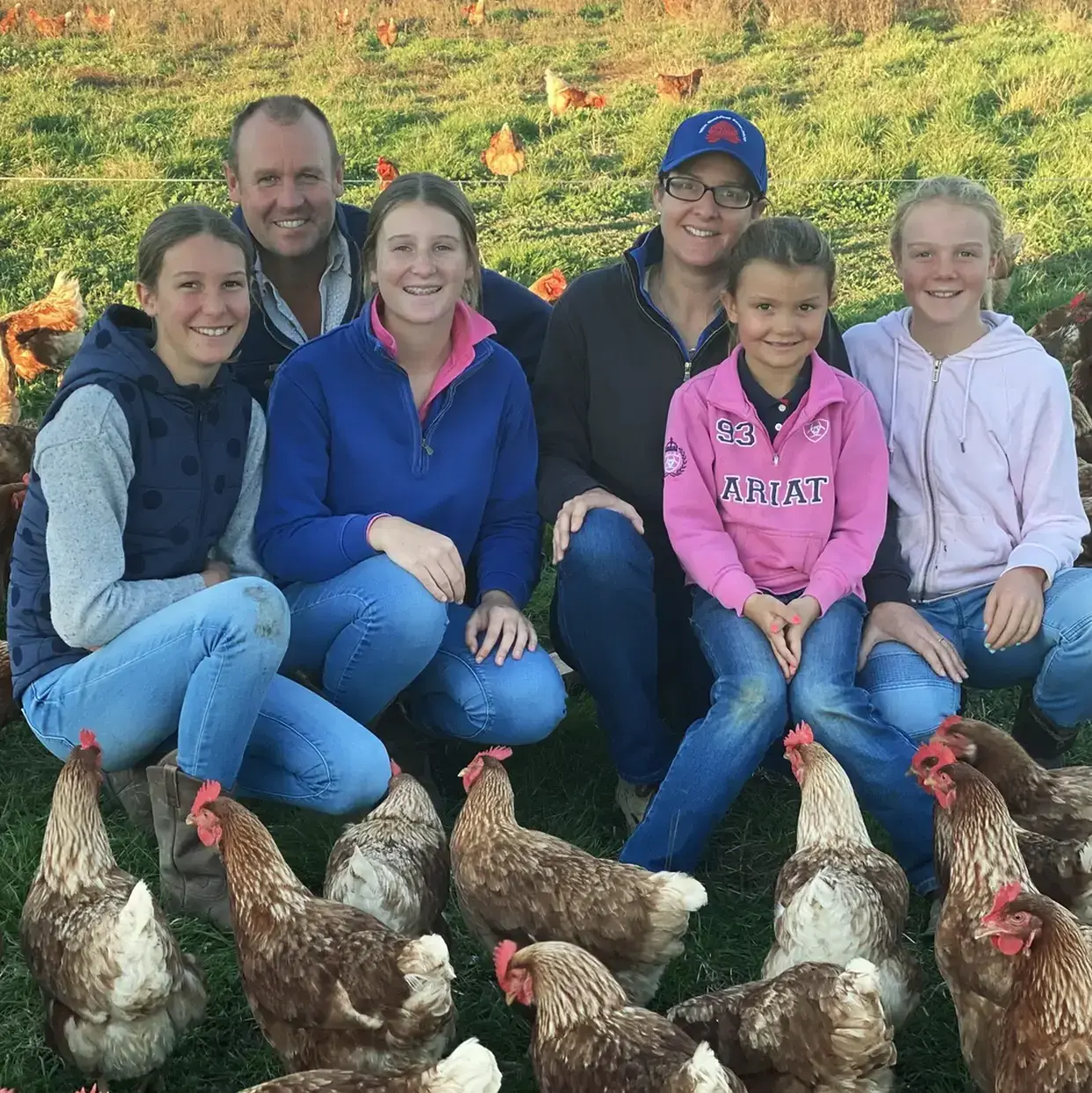
The Pincotts of Bellvue
If you are interested in this topic and want to participate in the conversation, or put forward a question for discussion, please sing out to us at [email protected].
Going forward, we plan to continue these conversations, covering topics like lovegrass, bio-fertilisers and more. If you have suggestions for other Regenerative Conversations that you would like to see included in our program, please vote via our Facebook Group or contact us at [email protected].



